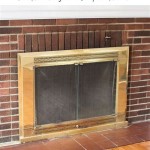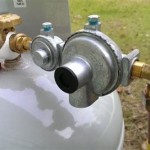Best Gas Fireplace Inserts Direct Vent: A Guide to Choosing the Right One
Gas fireplace inserts are a popular way to add warmth and ambiance to a home. Direct vent gas fireplace inserts offer a number of advantages over traditional fireplaces, including increased efficiency, greater control over the flame, and the ability to be installed in a wider range of locations. Choosing the right direct vent gas fireplace insert for your needs can be a challenge, given the wide variety of models available. This article will provide a comprehensive guide to help you understand the key features and considerations for selecting the best direct vent gas fireplace insert for your home.
Understanding Direct Vent Technology
Direct vent gas fireplace inserts differ from conventional fireplaces in how they draw in combustion air and exhaust fumes. Instead of relying on an open chimney, direct vent inserts use a sealed system with two pipes: one for drawing fresh air from the outside and another for venting exhaust gases directly to the outdoors. This closed system offers several advantages:
- Greater Efficiency: Direct vent inserts utilize a more efficient combustion process, maximizing heat output while minimizing energy loss. They often have higher AFUE (Annual Fuel Utilization Efficiency) ratings compared to traditional fireplaces.
- Improved Safety: The sealed system eliminates the risk of backdrafting, a potential hazard with traditional fireplaces. Direct vent inserts also require less maintenance compared to conventional fireplaces.
- Versatility in Installation: The sealed system allows for installation in locations where a traditional chimney is not available, such as in homes without a flue or where adding a chimney is impractical or expensive.
Key Considerations for Choosing a Direct Vent Gas Fireplace Insert
When selecting a direct vent gas fireplace insert, there are several key aspects to consider. These include:
1. Heat Output and BTU Rating
The BTU (British thermal unit) rating indicates the amount of heat a fireplace insert can generate. The appropriate BTU output depends on the size of the room and the desired level of heating. A larger room will require a higher BTU rating. Consider consulting with a professional to assess your heating needs and determine the optimal BTU rating for your space.
2. Fuel Type: Natural Gas vs. Propane
Direct vent gas fireplace inserts can run on either natural gas or propane. Natural gas is typically less expensive, while propane may be more readily available in certain areas. The choice depends on your local gas availability and cost considerations.
3. Design and Aesthetics
Fireplace inserts come in a variety of styles and designs, from contemporary to traditional. Consider the overall aesthetic of your home and choose an insert that complements your décor. Features to consider include the materials used, the fireplace surround, the size of the viewing area, and the presence of optional features like logs or embers.
4. Efficiency and Operating Costs
Direct vent inserts generally offer higher efficiency compared to traditional fireplaces. Pay attention to the AFUE rating, which indicates the percentage of fuel converted into usable heat. Higher AFUE ratings mean greater efficiency and lower operating costs. Consider the expected annual usage and the cost of gas in your area to estimate ongoing operating expenses.
5. Venting System Requirements
Direct vent inserts require a dedicated venting system to exhaust combustion gases. The vent system typically consists of two pipes, one for fresh air intake and the other for exhaust. Determine the available space for the vent system and ensure it complies with local building codes. Consider the distance and location of the vent termination point, as this can impact installation complexity and cost.
6. Features and Options
Some direct vent gas fireplace inserts offer additional features like a remote control, electronic ignition, a fan for forced air circulation, and variable flame settings. Consider your preferences and needs when choosing these features.
7. Brand Reputation and Warranty
Selecting a reputable brand known for quality and reliability is essential. Research different manufacturers and their product lines. Pay attention to the manufacturer's warranty, which should cover any defects in materials and workmanship.
8. Professional Installation
Proper installation of a direct vent gas fireplace insert is crucial for both safety and optimal performance. Seek professional installation by a licensed contractor experienced in gas fireplace systems. Ensure they comply with local building codes and safety regulations.
Choosing the best gas fireplace insert for your home requires careful planning and consideration of several factors. This guide highlights the key aspects to focus on when making this investment. By understanding the technology behind direct vent inserts, evaluating your needs, and selecting a reputable brand and installer, you can find the perfect direct vent gas fireplace insert for your home.

Majestic Jasper30in Jasper 30 Inch Direct Vent Gas Insert
.aspx?strip=all)
Top 11 Gas Fireplace Insert Trends Of 2024

Best Gas Fireplace Inserts Fireplaces Direct Learning Center

White Mountain Hearth Rushmore Direct Vent Insert With Truflame Tech Fireplaces Usa

Best Gas Fireplace Inserts For Homeowners In 2024

How To Buy A Gas Fireplace Insert Buyer S Guide From Regency

Gas Fireplace Inserts Pros And Cons Of Ventless Fireplaces

Rushmore 30 Direct Vent Fireplace Insert Fine S Gas

Direct Vent Gas Fireplace Insert Mpi27

Best Gas Fireplace Insert Top 5 For Existing Fireplaces








